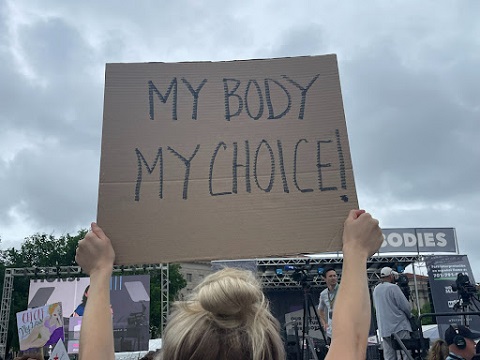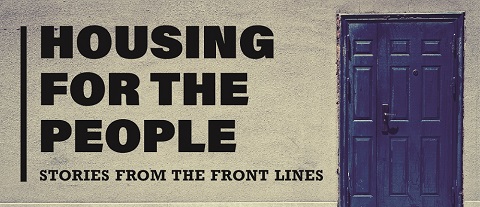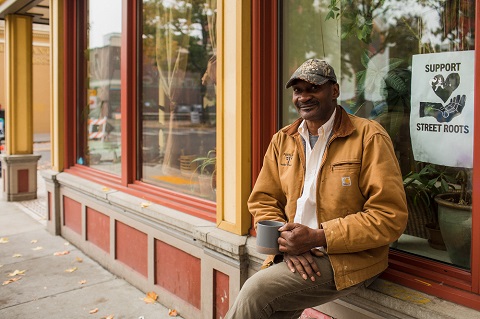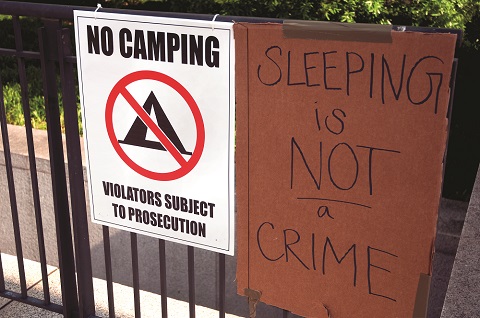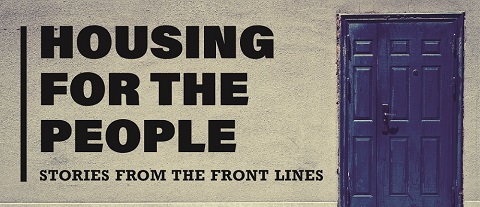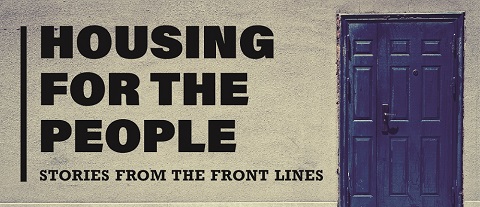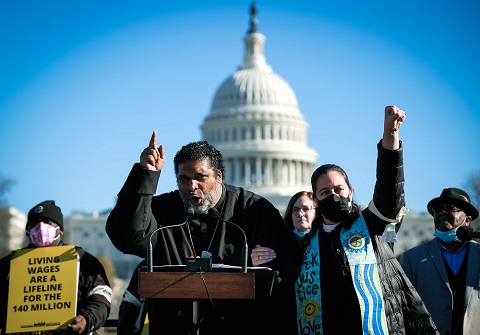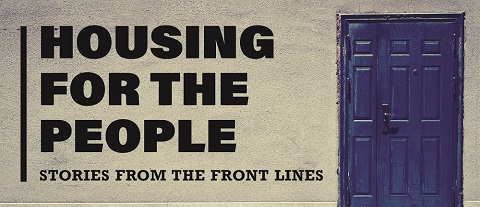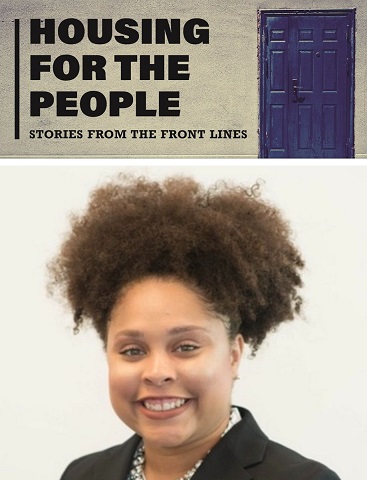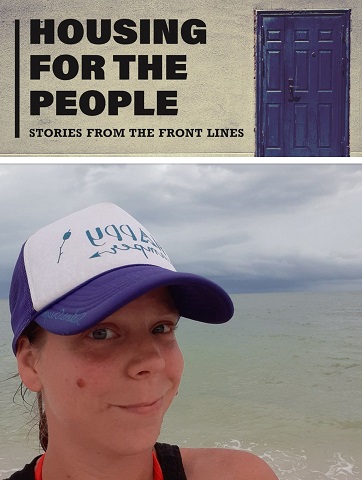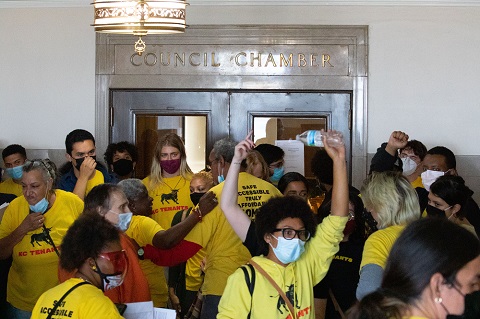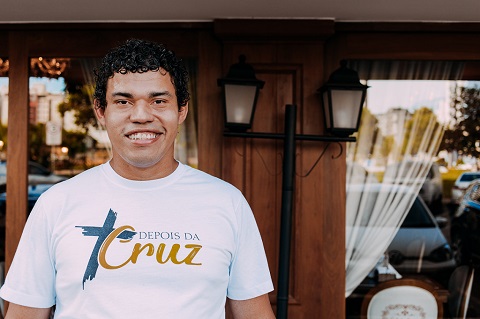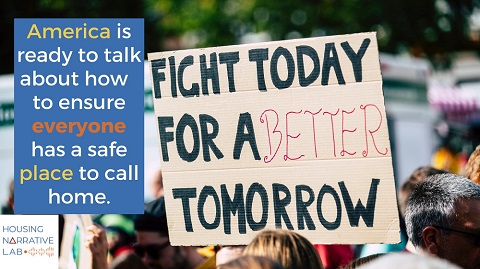To mark the 2019 INSP Awards, the ceremony for which takes place tonight in Hannover as part of the Global Street Paper Summit, we are diving into the INSP Archive to bring you the pieces crowned with editorial honours. Oklahoma City’s The Curbside Chronicle published its ‘Ghost Bikes’ photo essay last year during National Bike Month and is now the recipient of this year’s Special News Service Award.
Words by Whitley O’Connor
Photos by Henry Hargreaves [Each photo is captioned with the victim of the accident it commemorates]
Each year, between 45,000 and 50,000 cyclists are injured in traffic accidents in the United States according to the National Highway Traffic Safety Administration. In 2016, 840 cyclists died. Stark white, chained to a fence or lamppost, and often bearing flowers, ghost bikes stand as somber memorials to these fallen riders.
Last fall, Henry Hargreaves, missed being counted among this statistic by less than two inches, narrowly avoiding his own ghost bike. Since then, Henry has gone on to share his photo series as a haunting reminder of just how close danger is for cyclists and to open a much-needed discussion on sharing the road.
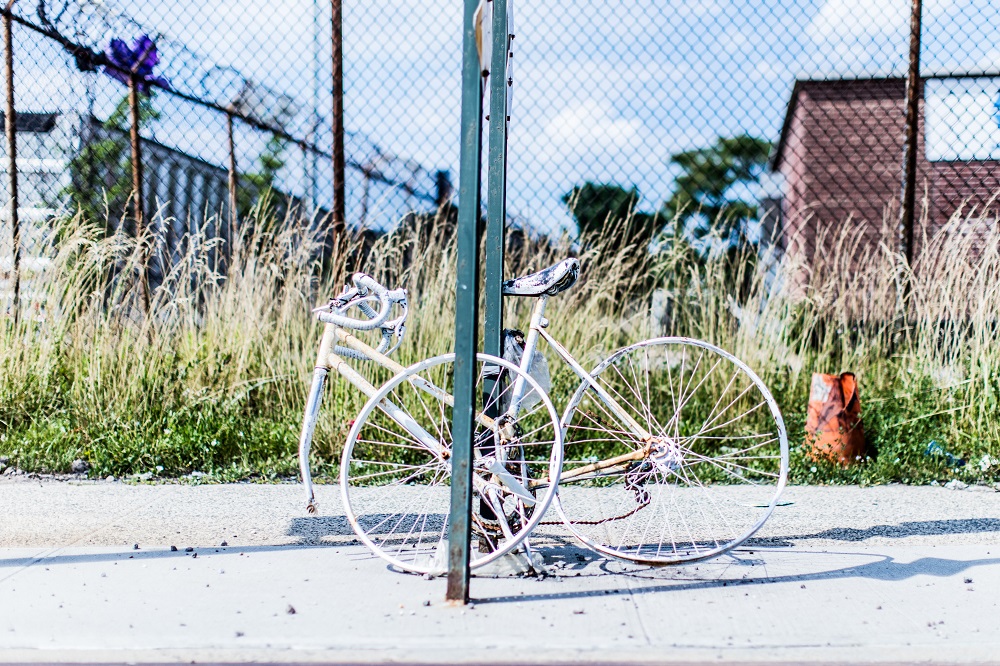
Henry first noticed white bikes chained to lampposts around his apartment in Brooklyn several years ago. “When I moved to New York and went around, I’d see these white bikes that were chained up to lampposts on street corners. I never really paid much attention to them until one day I passed one with a little placard with someone’s name and a range of dates. I realized that they were marking the deaths of cyclists,” recalls Henry. “It kind of became this haunting symbol of the road for me. This was also around the time I started becoming a cyclist, so it was sort of a reminder that you’re always just two feet away from a fatality. It was this spooky thing.”
Ghost bikes are a relatively new phenomenon. The first recorded ghost bike came in 2003 in St. Louis, Missouri when Patrick Van Der Tuin – who had witnessed a motorist hit a cyclist in a dedicated bike lane – painted a bike white and placed it at the scene with a sign saying, “cyclist struck here.” Observing improved awareness from motorists near the scene following the bike’s placement, Van Der Tuin recruited help spreading bikes across the city.

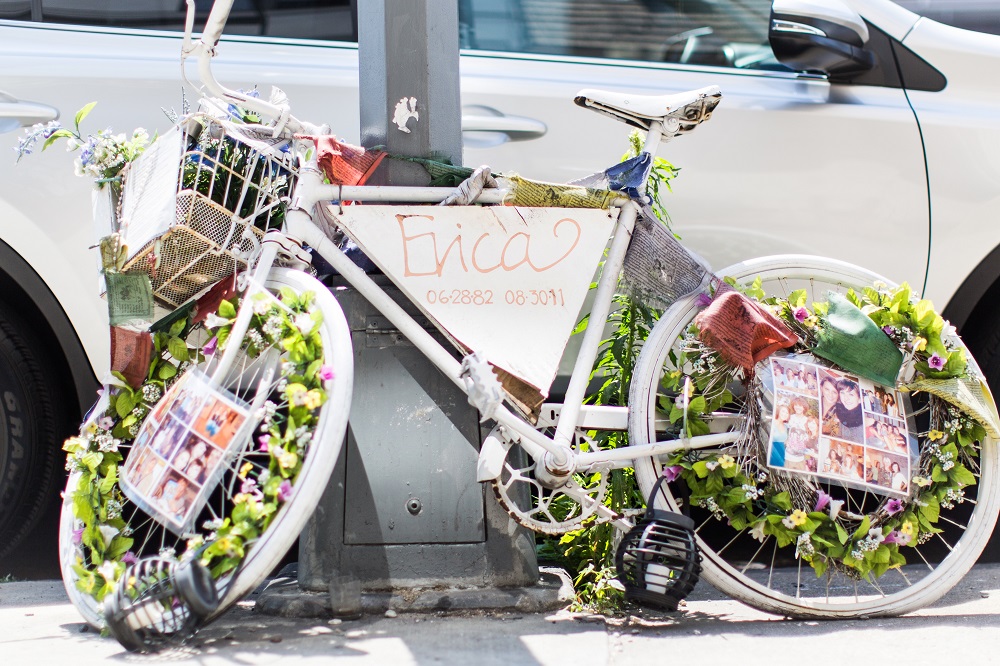

The movement soon took hold, with ghost bikes spreading as far as London by 2005. Now, ghost bikes can be found around the globe.
Oklahoma has seen its own share of ghost bikes. In Oklahoma City, a ghost bike was placed along Lake Overholser in 2013 to honor a fallen cyclist who was killed while participating in a charity bike ride. Another bike placed in 2010 along East Britton Road still remains today to commemorate a fallen cyclist.
“To me, they’re kind of a metaphor for the corpse,” Henry said. “When they get placed, they’re pristine and white. But from the pictures I took, you can see various levels of decomposing that’s happened. People come in and steal the wheels off of ghost bikes, and to me, it’s almost like raiding a grave. Sometimes, they just completely disappear.”
New York City has been the epicenter of the ghost bike movement, and Henry had been photographing bikes in Brooklyn for several years. But it wasn’t until his own cycling accident that Henry realized the purpose for these photos. While riding his bike from his apartment to his photography studio, Henry was car-doored. Without looking, a man illegally parked opened his car door as Henry approached, sending him over the handle bars and catching his throat on the corner of the door. Bleeding profusely, Henry insisted the driver take him to a medical center several blocks away. The driver dropped Henry off and quickly sped away.
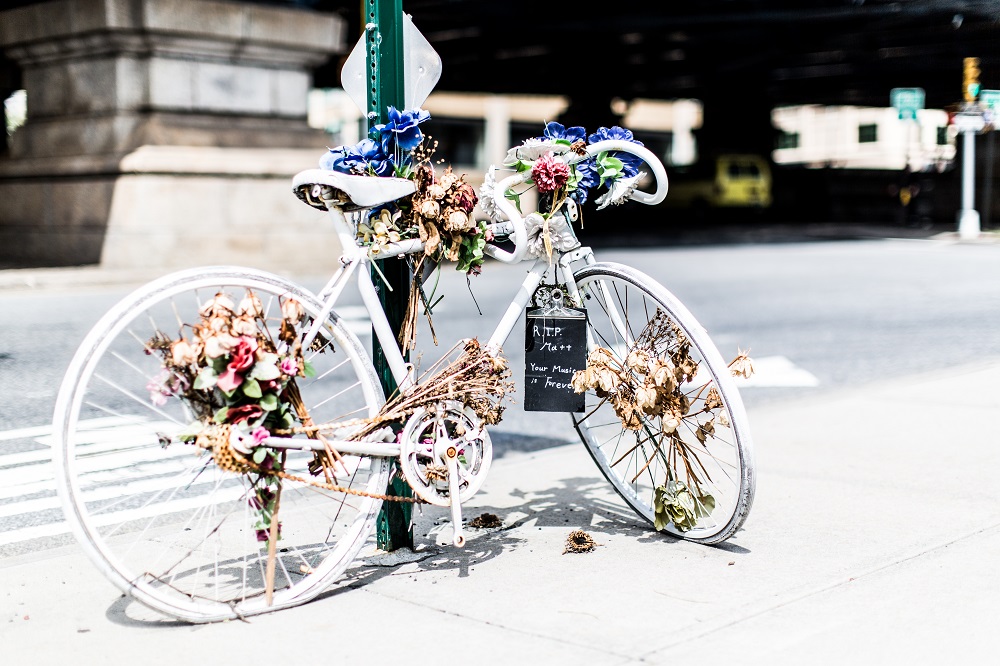
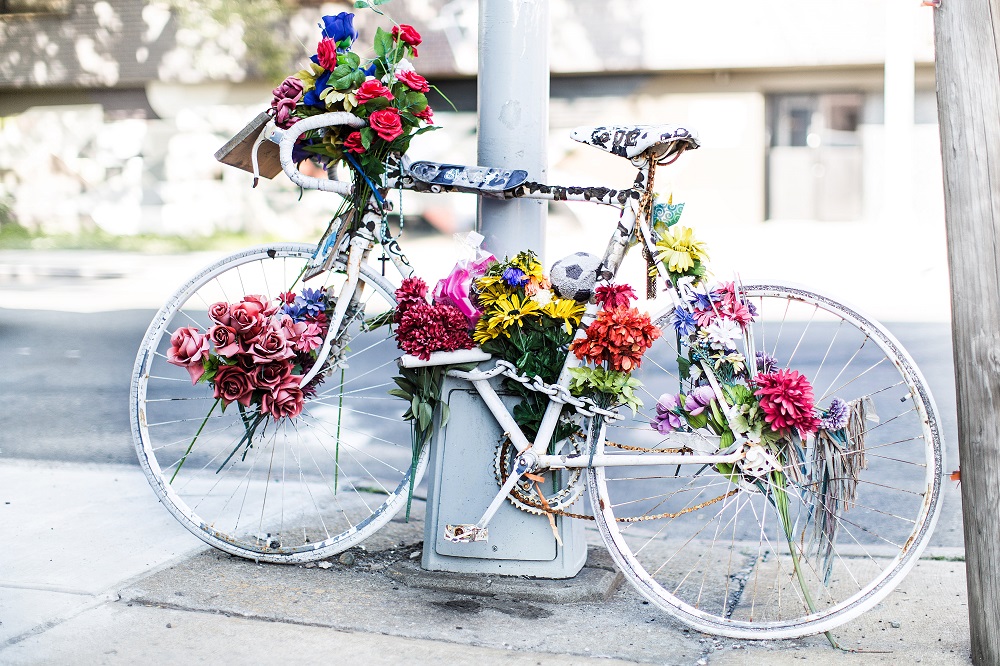
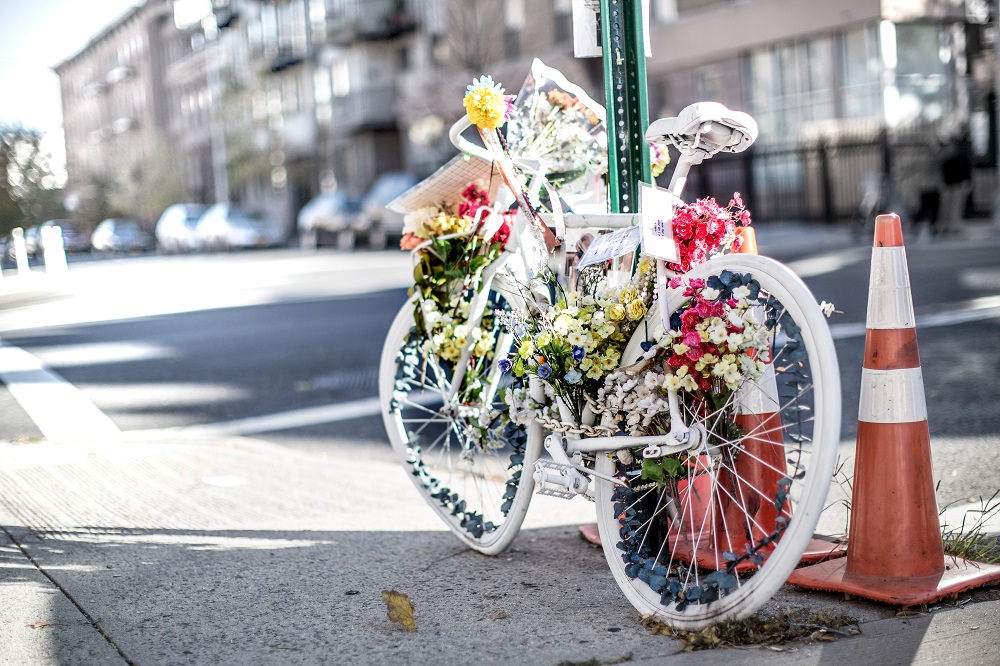
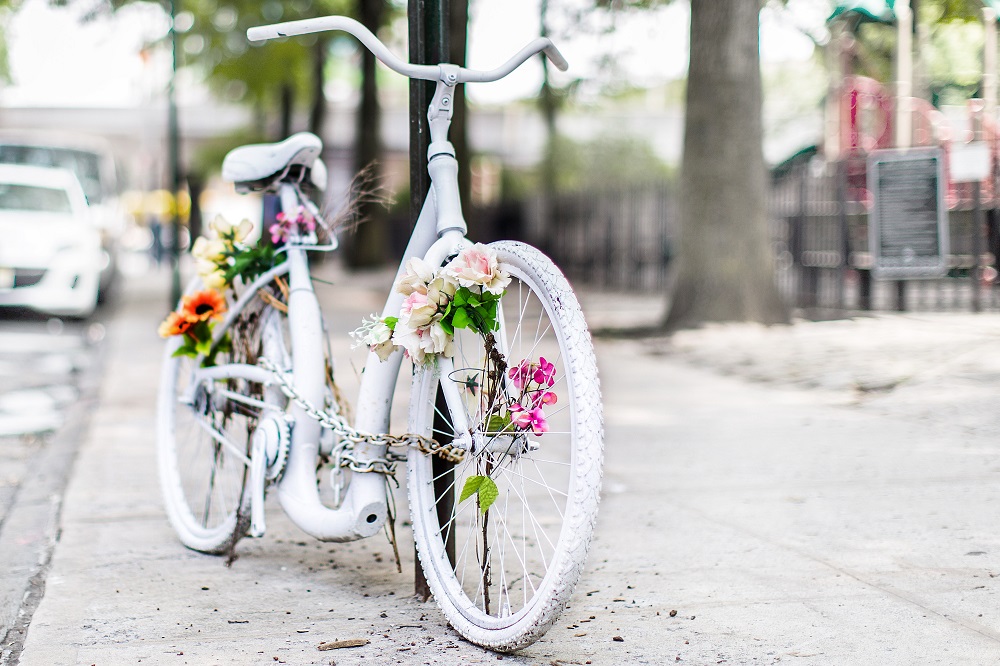
“The corner had caught me right between my jugular and my wind pipe, so a couple inches either way and it would have been much more serious,” said Henry. “I got a dozen stitches and a $1,500 medical bill.”
Henry left the experience determined to do something. “I had been working on the project before this happened, just documenting ghost bikes,” Henry said. “Then afterwards, I wanted to put it out as a way to make people more aware of cyclists on the road and to make the cyclists more aware of the dangers around them.”
Since releasing his photo series, Henry has received a lot of positive feedback, with many saying they had seen the bikes but didn’t know what they symbolized. It has created a conversation.
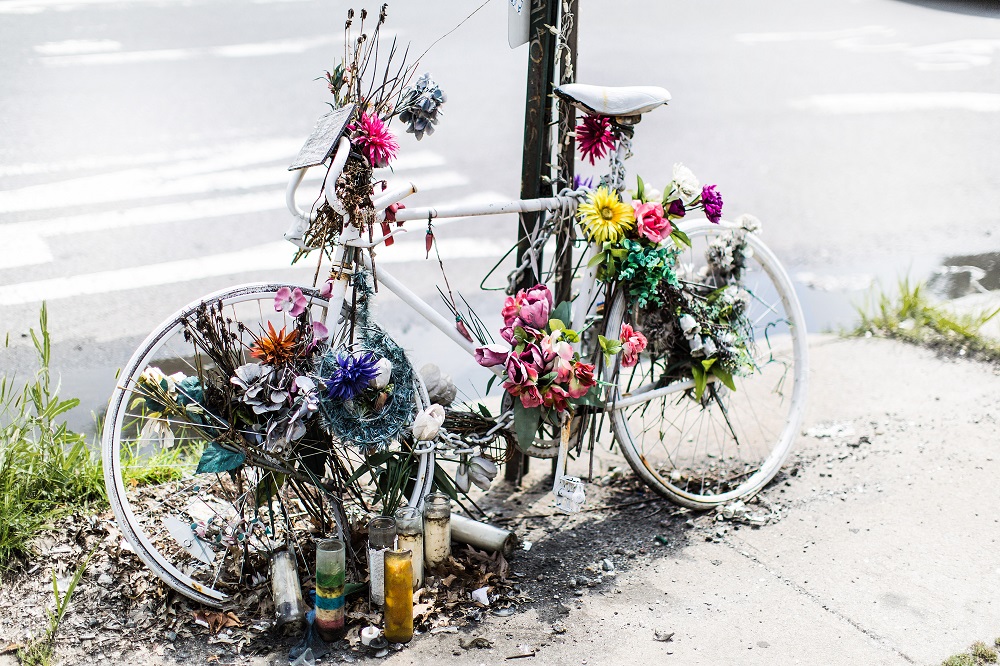
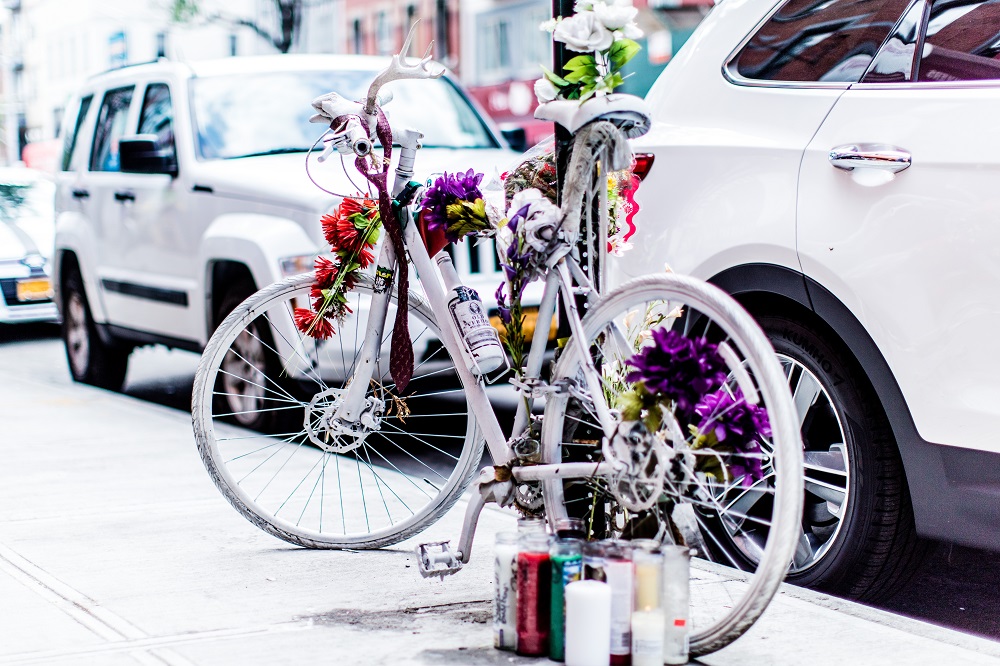
“Cycling cuts down on congestion and environmental impact. It’s good for your health, and it doesn’t make noise. Most of the effects are pretty beneficial to everyone around you,” said Henry. “Cyclists have such a small footprint – tire print if that’s what you want to call it – on the road that we’re easily ignored. If a few more people think about cyclists and are a bit more cautious, then it has been worthwhile doing this whole series.”
With Oklahoma ranking 46th in the country in The League of American Bicyclists’ 2017 Bicycle Friendly State Rankings, this is a conversation we need to have. “The whole thing was wanting to put up a magnifying glass to just respect each other more and be more courteous on the road. Opening a dialogue through this project was the goal.”
INSP members can download this story from the INSP News Service here.






